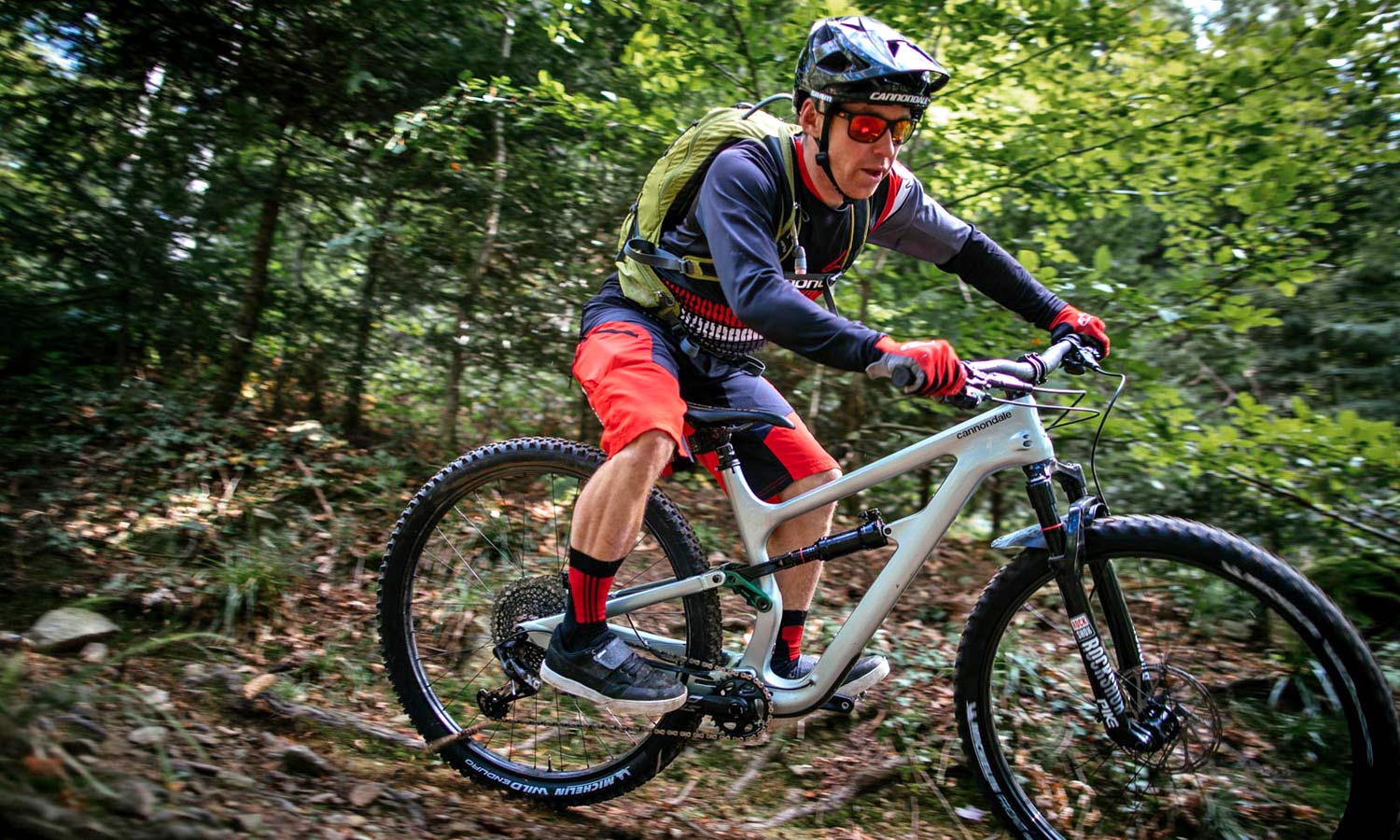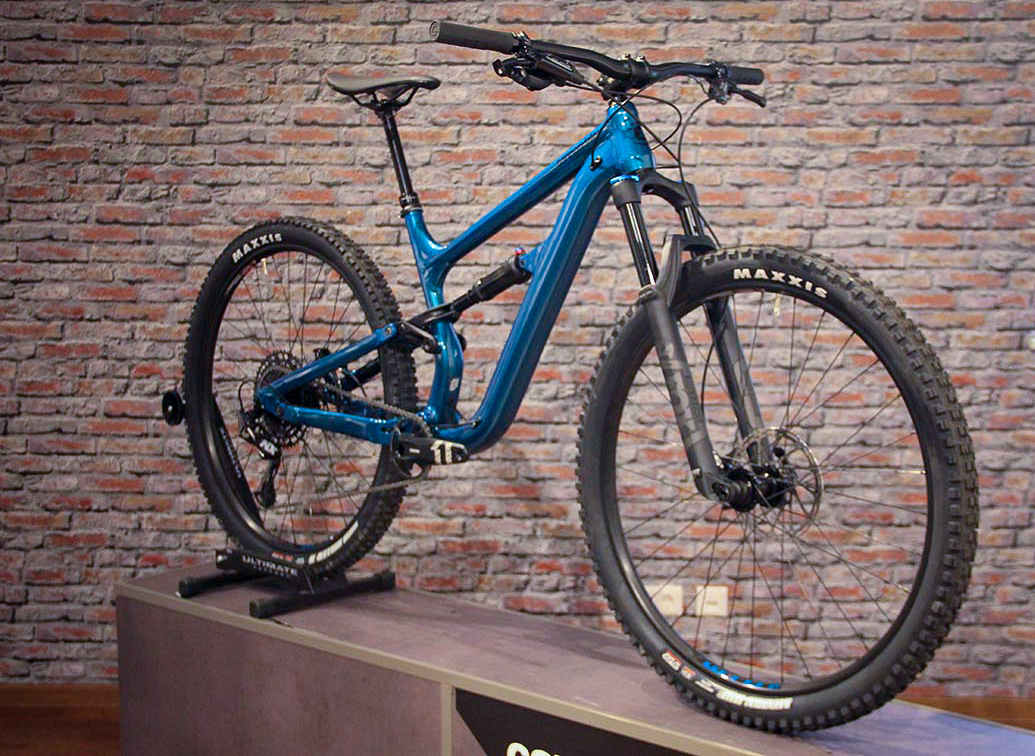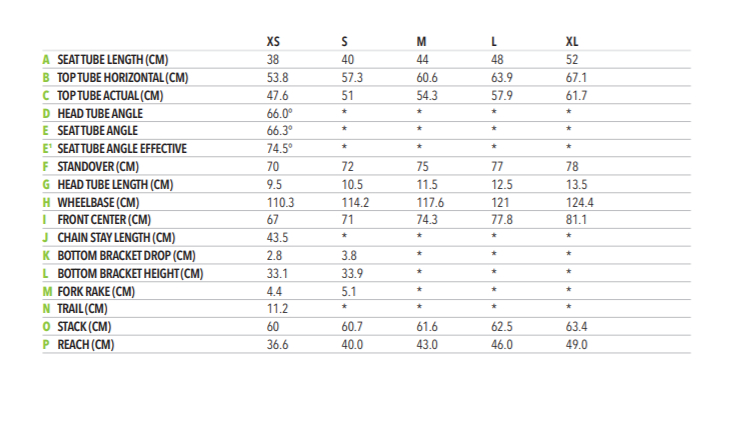Take everything you thought you knew about the Cannondale Habit and throw it straight out the window – the newest trail bike from Cannondale has almost nothing in common with its predecessor. Gone are the single-pivot swing-link actuated shock and 27.5-inch wheels, replaced by a 4-bar linkage suspension platform on fast-rolling 29-inch wheels; a different beast altogether.
2019 Cannondale Habit 130mm 29er trail mountain bike
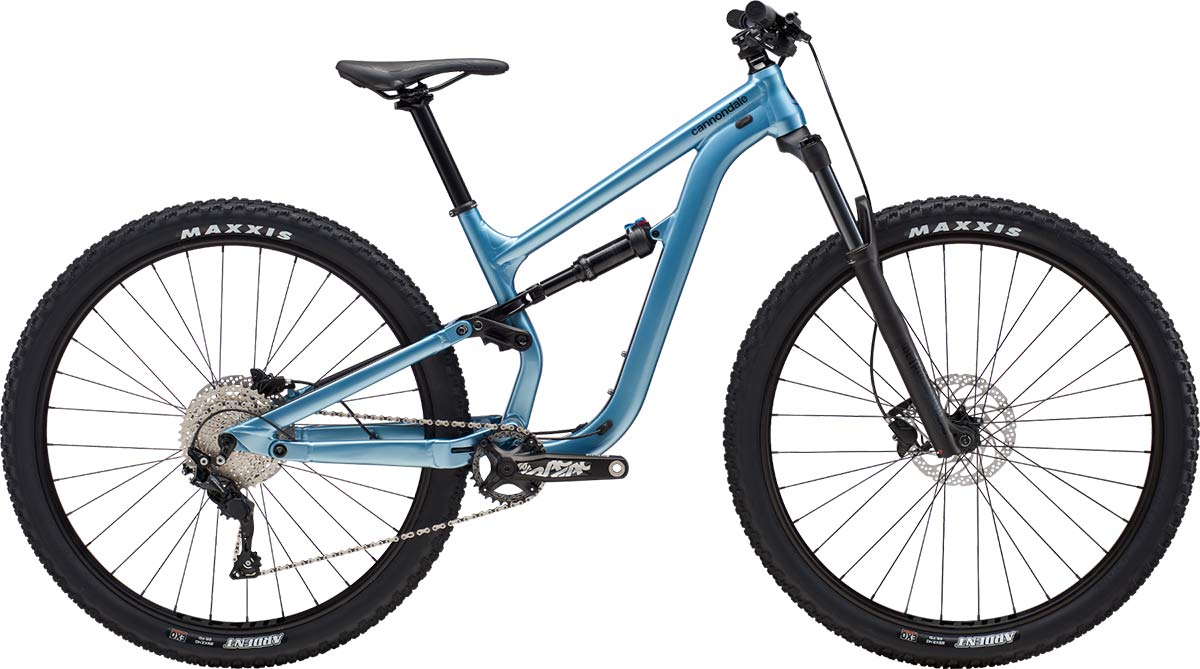
Cannondale are offering the Habit in no fewer than 9 different flavors: 4 Carbon, 5 Alloy, with 3 of these spec’d for women specifically. Here, we’ll focus on the frame tech and design details, but complete build specs are on the Cannondale website. Importantly, all models are spec’d with Maxxis tires and Fox suspension, and the frame specification remains identical between the men’s and women’s bikes.
Upon first glance we see straight away that Cannondale have tried to keep things standard and ‘mainstream’ with this bike. There’s no trademark Lefty fork and no handlebar operated geometry adjustment going on as we’ve seen previously with the longer travel Trigger. However, don’t let that lead you to believe that Cannondale are holding off on innovation. With the new Proportional Response design philosophy quite the opposite is true – we’ll come to that in a minute.
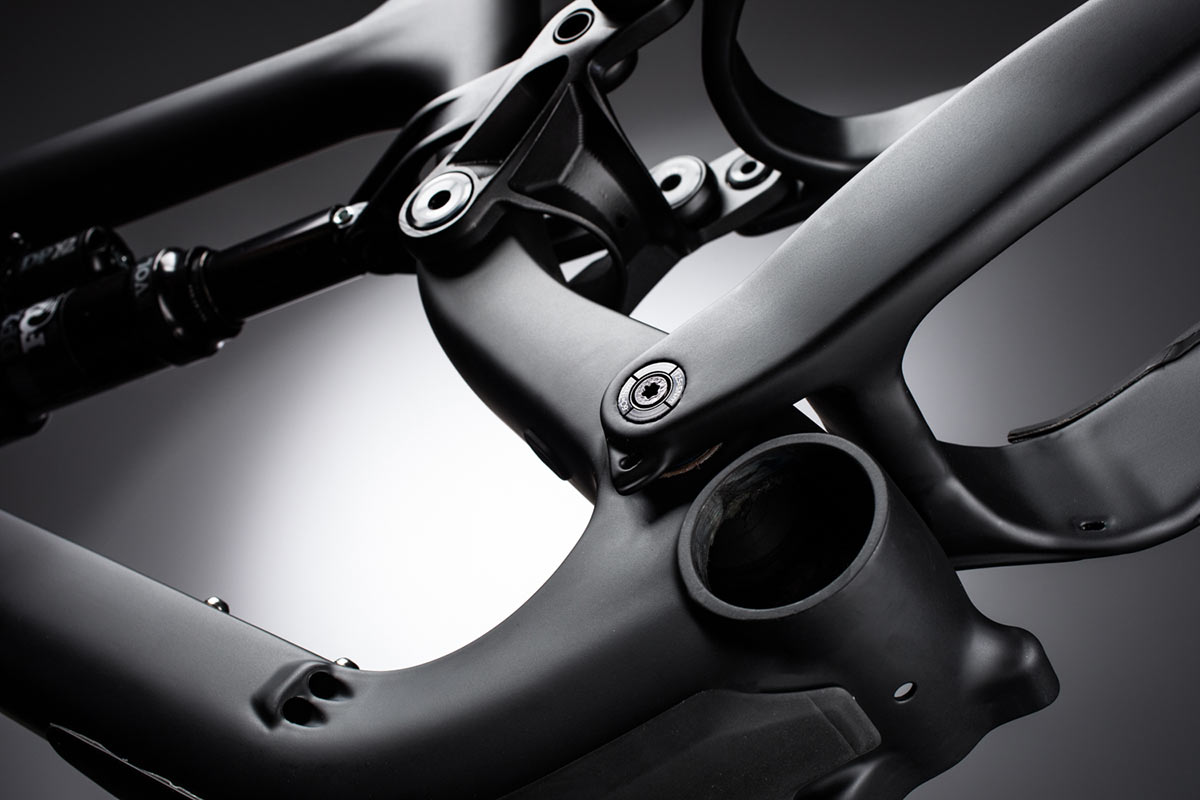
The Habit features 130mm travel and is fitted with a 140mm-travel traditional upright and perfectly symmetrical fork thank you very much. The 4-bar suspension is a multi-link mechanism comprising of four links, as the name suggests – the Habit features a closed 4-bar linkage, which would be described as a clockwise system, since both the upper and lower links rotate in the same direction.

The head angle is nice and slack for a trail bike at 66º with a 435mm chainstay length. Cannondale designed this bike to be fun and capable over technical terrain and easy to own. It is spec’d as you would expect any decent trail bike to be: short stem, wide handlebars, wide rims, lock-on grips and with frame protection both on the underside of the downtube and on the chain stay drive-side. All models are also spec’d with the super comfortable ergonomic Fabric saddles.
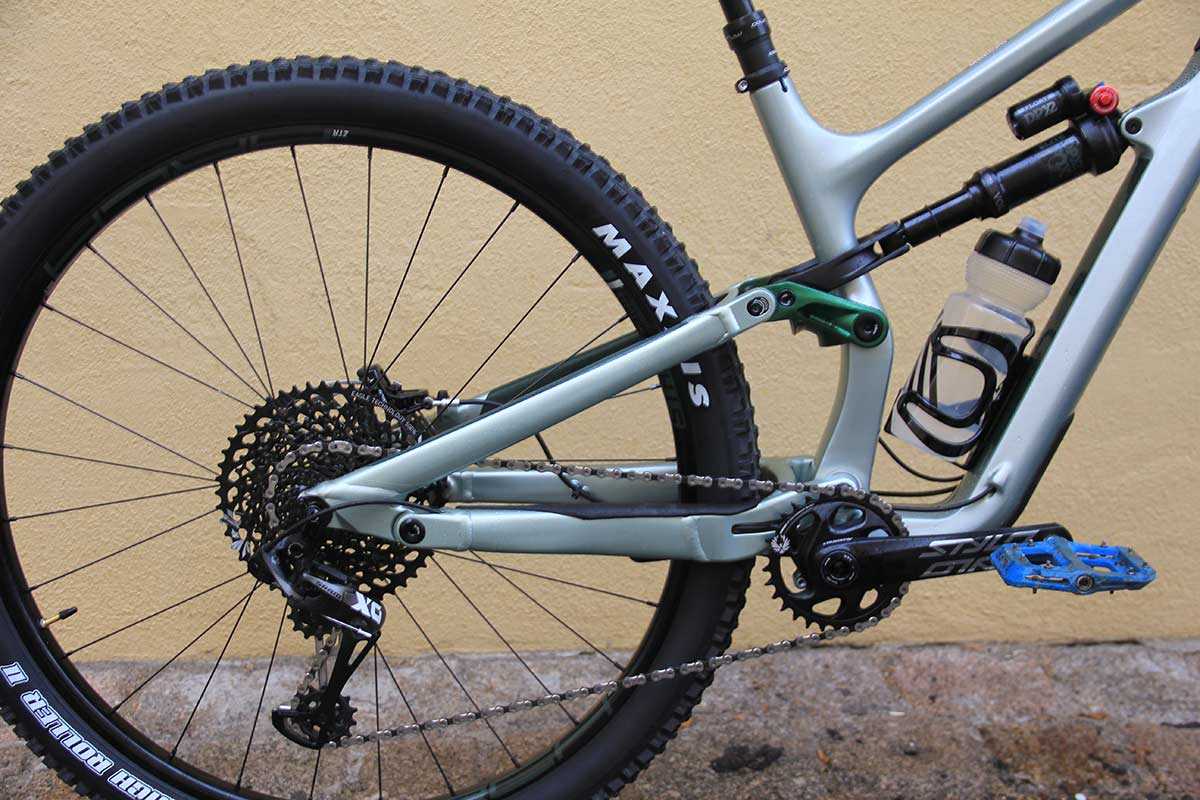
The frame has heaps of tire clearance with room for up to 2.6″ tires on the 29er. For those wishing to make the bike more nimble and accelerate that wee bit faster, the frame can also take 27.5+ wheels, up to a 3.0 depending on brand (measured width limit of 74mm).
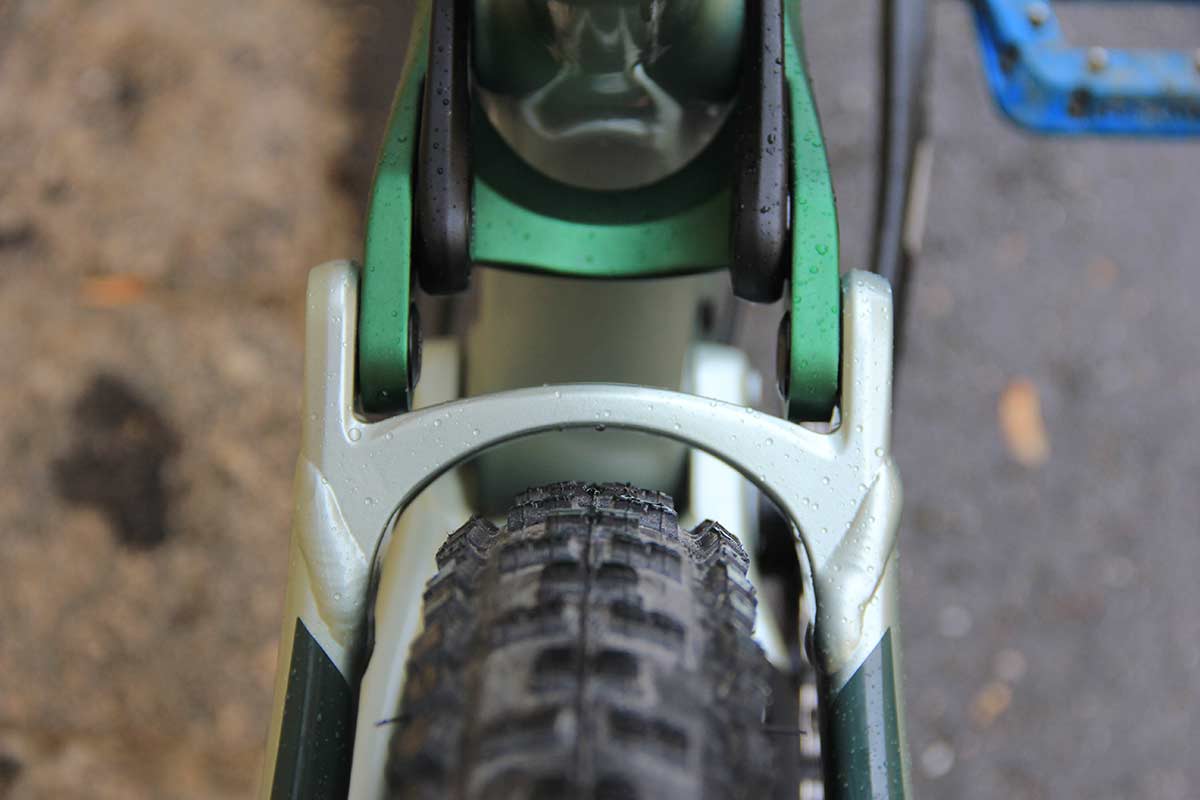
The carbon frames are made with their BallisTec carbon to give it both high-strength and high-stiffness. New to Cannondale? BallisTec is composed of ultra-strong fibers like those used for military ballistic armoring, which helps protect the frame from rock strikes and other impacts. To tune the overall stiffness and ride-feel of the frame Cannondale layers these stiffer (but more brittle) fibers with high and standard modulus carbon fibers to create an interconnected network of stiffening fibers throughout the frame. This allows for precise tuning of stiffness and deflection at different points throughout the frame.
What is Proportional Response geometry?
In a nutshell, the Proportional Response design philosophy is size-specific engineering, but applied in a novel way. In designing the new Habit, frame design engineer Luis Arraiz started with a clean slate. Cannondale’s aim was simple; to make a better bike that provides a more confident experience for every rider, no matter their size. By looking at each individual bike size and rider as its own unique system, Cannondale have engineered the optimal dynamic response and ride experience for each size of rider.
“Does size make a difference?”, I hear you say. The answer from Cannondale is an unequivocal ‘yes’. The research process started out with simple bench-marking of Cannondale bikes against the bikes of competitors. The testers themselves ranged in size and shape dramatically – both men and women, both very tall and very short. For each individual bike the feedback revealed an interesting pattern – riders of differing sizes riding the same bike described very different ride characteristics.
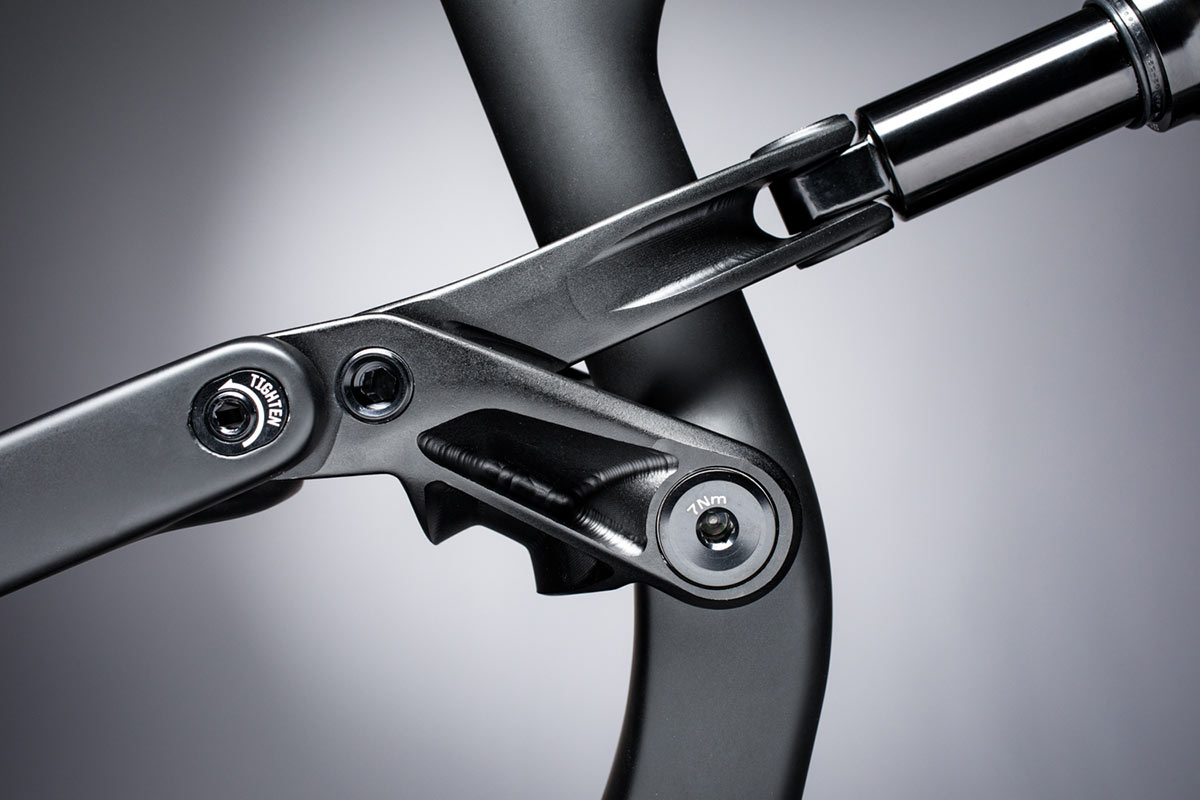
Generally, smaller riders described worse experiences under braking while taller, heavier riders described worse pedaling performance. These aren’t the most ground-breaking observations I grant you. It shouldn’t be news to us given we know riders of differing weight need different fork, shock and tire pressures. Rider weight accounts for around 85% of the weight of the bike-rider combo and so it is fairly obvious that it will have a massive impact on the ride feel of the bike.
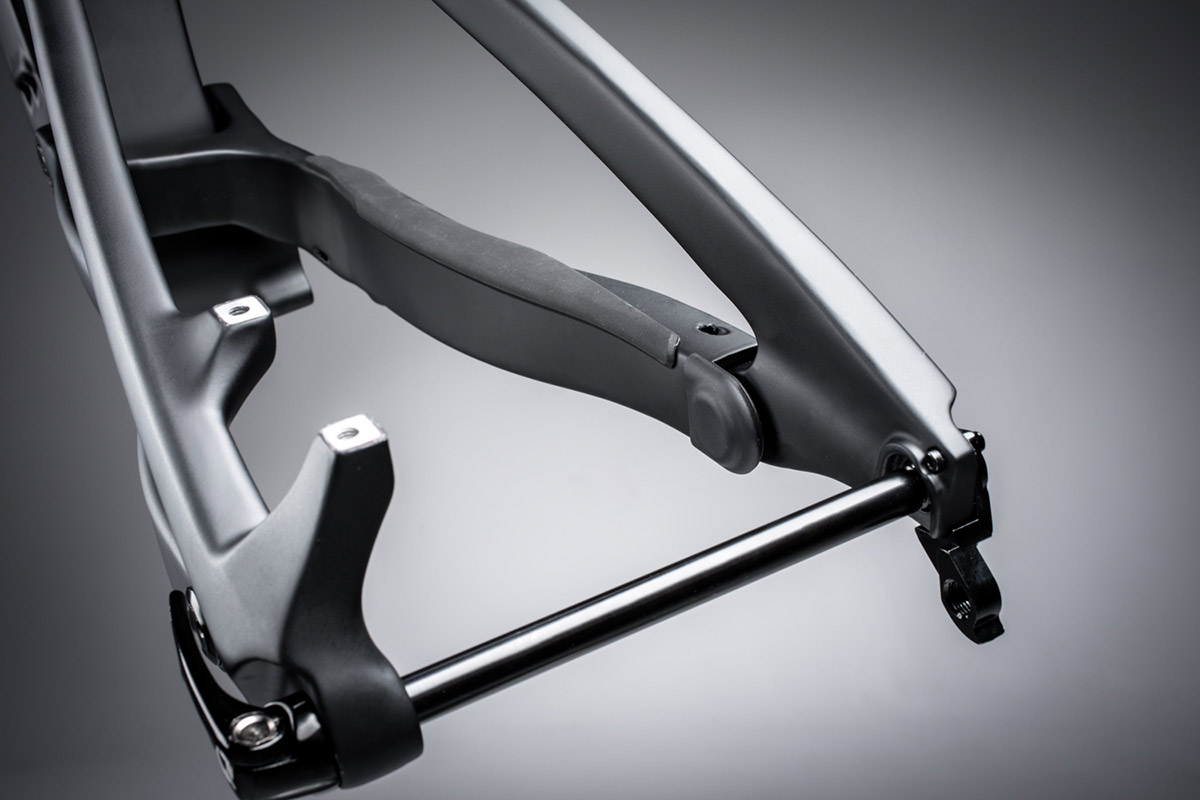
So what is the solution? Cannondale conducted a comprehensive study to find the real center of gravity for all sizes of rider. This is the most relevant metric describing the rider as it will influence every suspension metric, including anti-squat and anti-rise. Cannondale had each rider and bike rigged up to a whole host of sensors measuring suspension performance throughout climbing and descending. Utilizing the 4-bar suspension layout, and the map of center of gravity heights for braking and pedaling scenarios, Cannondale have achieved the desired anti-rise and anti-squat characteristics for each individual frame size of the new Habit.
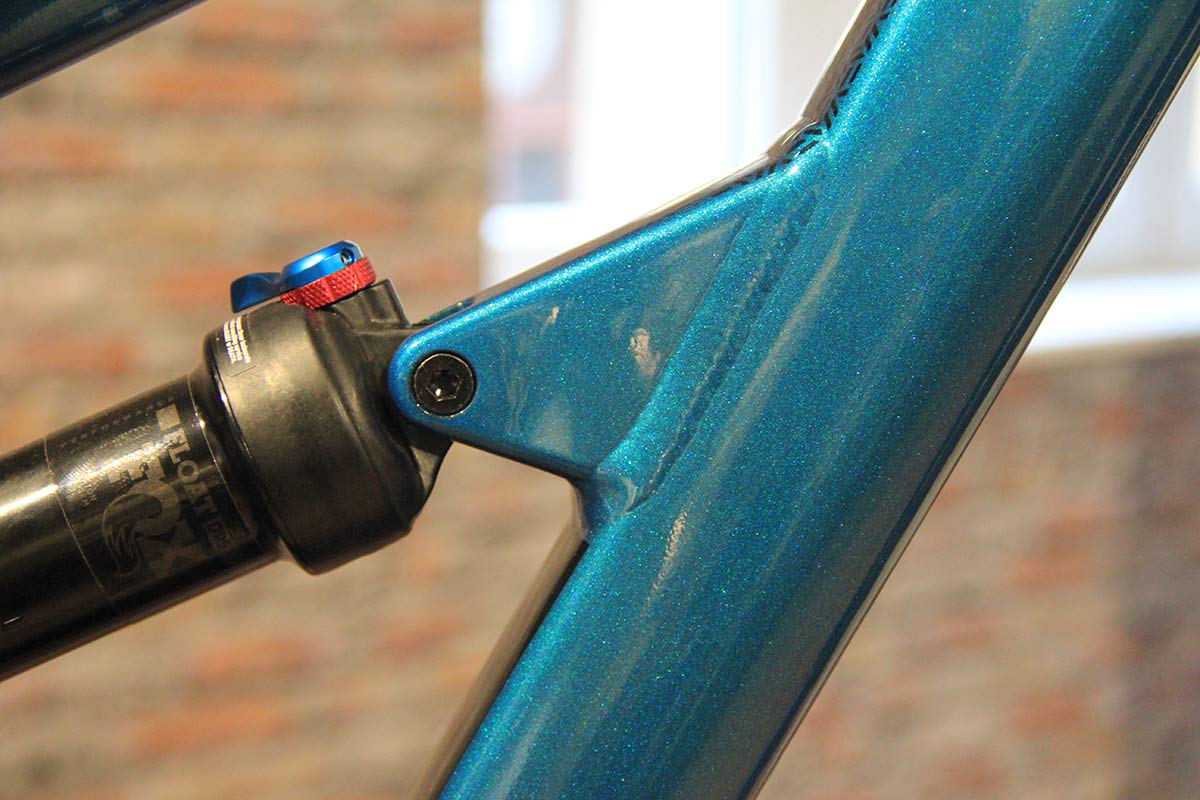
In real terms the research has resulted in this: in addition to the expected changes in tube lengths seen as you go up through frame sizes, Cannondale have manufactured three different sized linkage suspension platforms, with three different lengths for the shock’s front mounting tab, meaning the placement of the central suspension pivot is different for each size frame.
Cannondale reckon that until now, if you didn’t ride a size medium, your bike suffered from compromised suspension kinematics. With Proportional Response on the new Habit, now all riders can experience their perfect ride- from a tiny XS up to the big XL.
Why is the all-new Cannondale Habit ‘easy to own’?
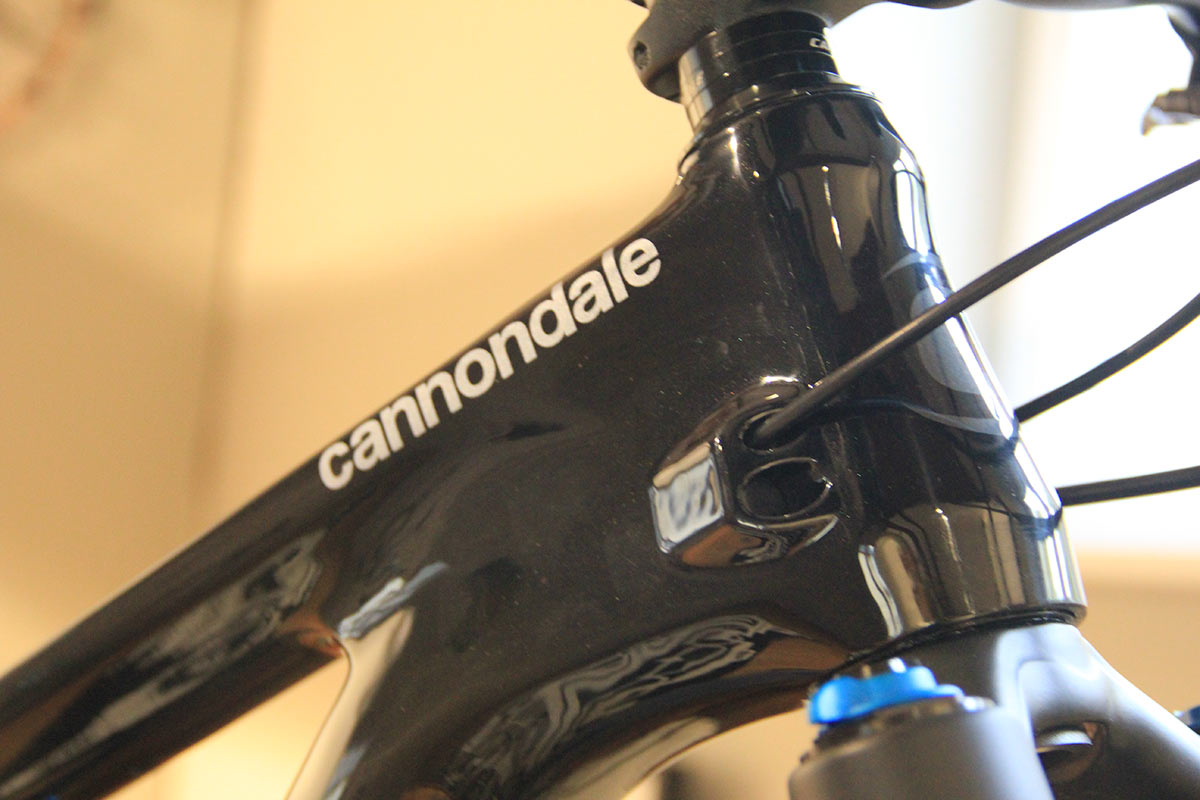
Cannondale have really gone out of their way to make the Habit as maintenance friendly as possible, both on and off the bike. First up we have the direct line internal cable routing which is essentially, a tube within a tube. Just feed your new cable into the tube (within the tube) and it pops out the other end exactly where you need it to. You can imagine how much this would speed up the process. With this simple routing solution you get all the benefits of internal routing, such as reduced rattle noise and risk of cable rub while also saving you time, not to mention your sanity.
This feature is only available on the carbon models – the internal tubes are inserted and bonded after the frame has been molded. Then they are cut and finished once the bonding is set.
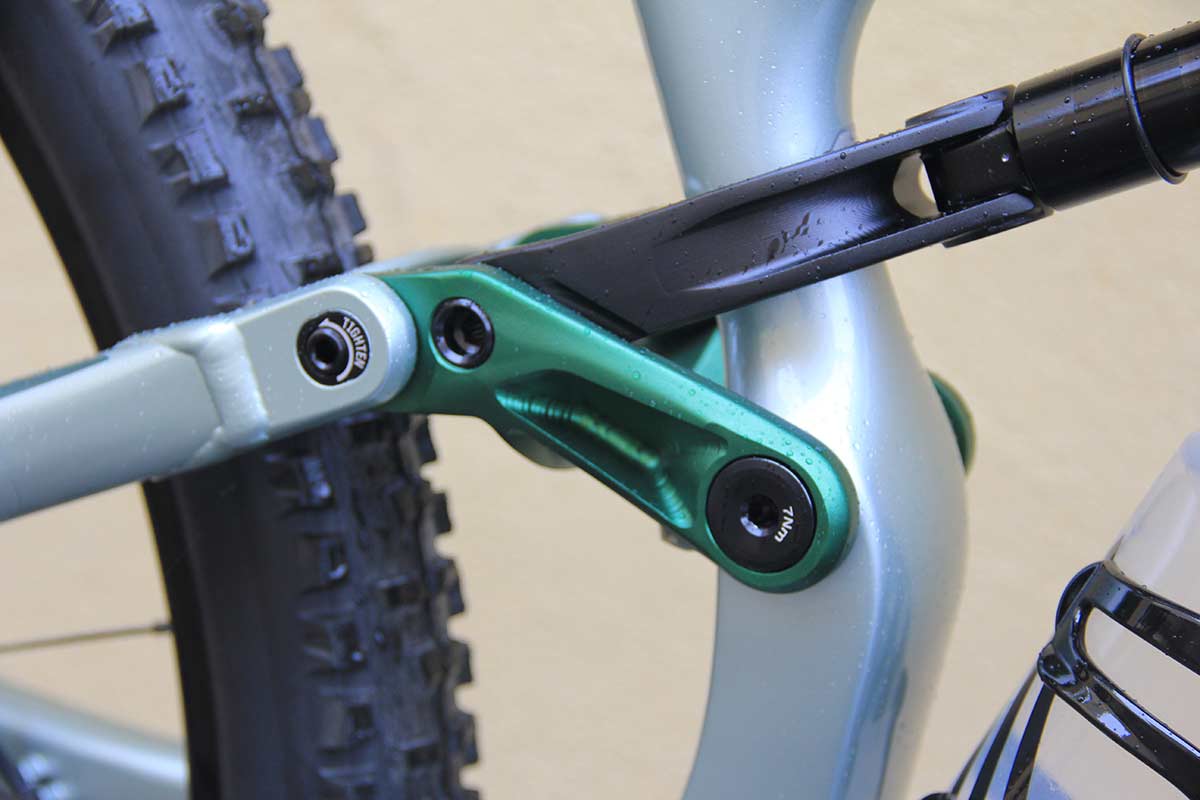
Secondly, the Habit features a flip-chip at the seat stay-yoke pivot which allows the rider to finely adjust the geometry of the bike. Flipping the chip alters the head angle of the bike by half a degree, and raises or lowers the BB height slightly, too. This is a simple and quick change to make and can be done mid-way through a ride if you feel you want to slacken it out for a fast descent.
Finally, and off the bike, Cannondale offer a free augmented reality app that allows the owner and bike shop mechanics to see exactly how each part of the bike fits together. With the Simon Service AR app, you can visualize the anatomy of each and every pivot and visualize the internals of the suspension fork and rear shock. This is a really nice feature for owners as it’ll allow them to do more of the maintenance themselves keeping those ownership costs down.
2019 Cannondale Habit – Asymmetric Integration
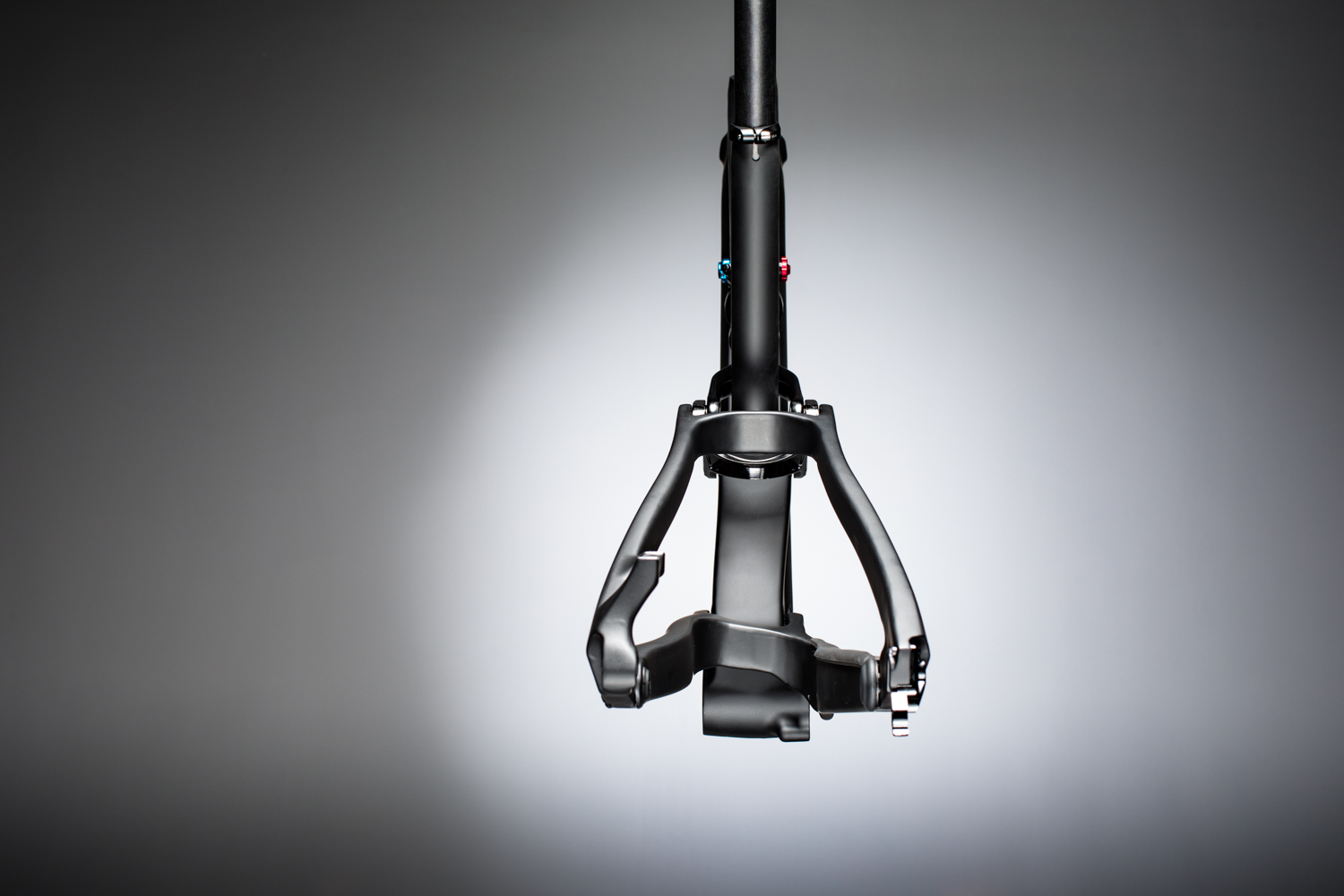
On the new Habit, Cannondale wanted to keep the chainstay short at 435mm for all-important rear wheel traction, while still allowing for decent tire clearance. To do this they made use of their Asymmetric integration (Ai) design – moving the drivetrain and driveside chainstay outboard by 6mm. The extra room means the Habit is actually compatible with a 2 chainring drivetrain – front derailleurs!. Nope, that extra room is just for more tire clearance and widely-spaced main suspension pivot bearings. Sorry (or maybe thank you very much) NO front derailleur compatibility – the Habit is 1x only! Of course, the cassette also moves outboard by 6mm to maintain a perfect chain-line. Rather than using a wider rear hub, the system takes a standard Boost rear wheel and re-dishes it over by 6mm 3mm. The result is more even spoke angles and tension on both sides for a stiffer rear wheel. So, standard hubs and everything, but any aftermarket wheel will have to be re-dished to work on this bike.
2019 Cannondale Habit – Pricing & Availability
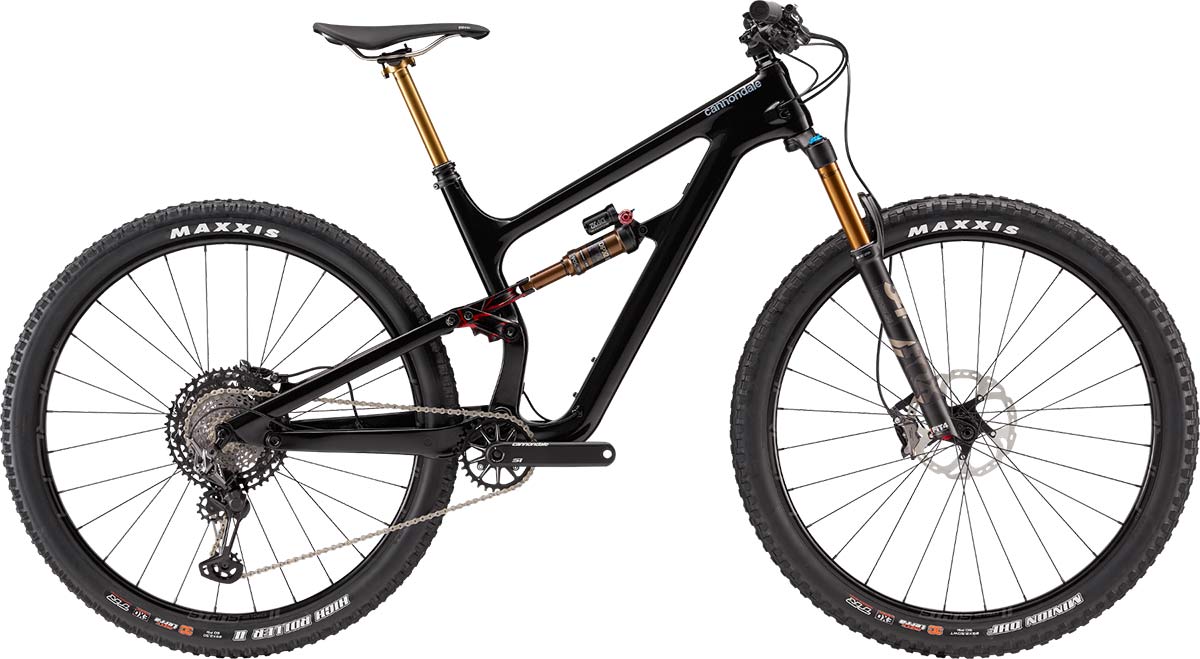
The all-new Habit is in stores now and ready to order in sizes XS through XL. All feature 29 inch wheels with 27.5+ wheel compatibility…except the XS, which comes stock with 27.5×2.6 tires and will not work with 29er wheels. The Aluminum models start from $2,100 for the women’s spec Al 3, and go up to $4,000 for the Al 5 model.

As for the Carbon frames, at the lower end of the spectrum you can pick one up today for $4,000. You’ll have to wait until early next year to be able to throw $7,900 at the top level Carbon 1 model though.
Stay tuned for first ride impressions!
